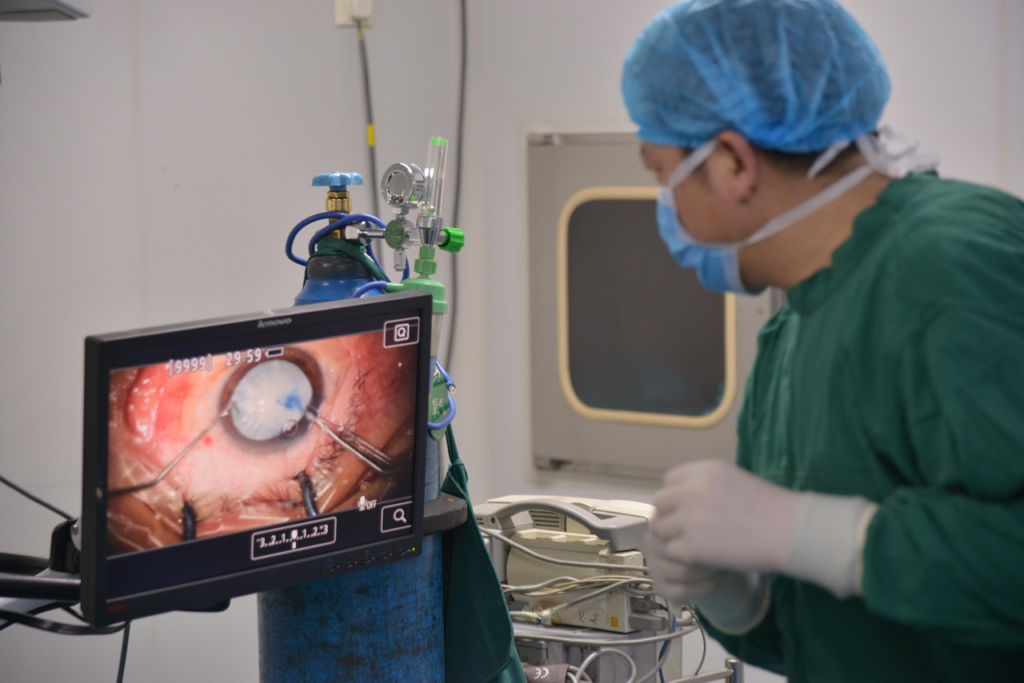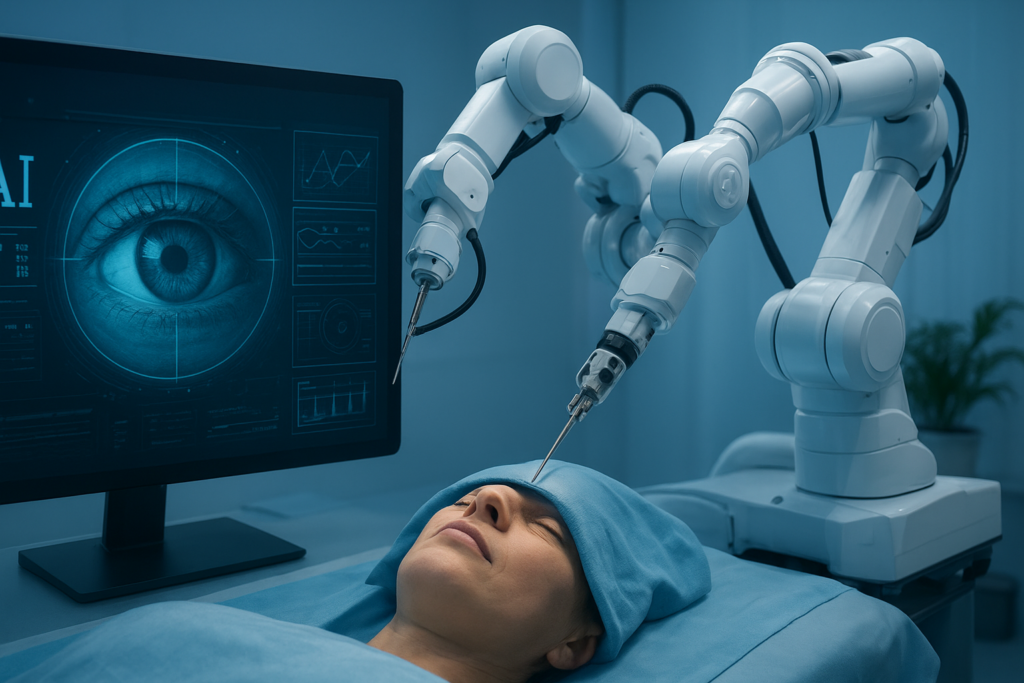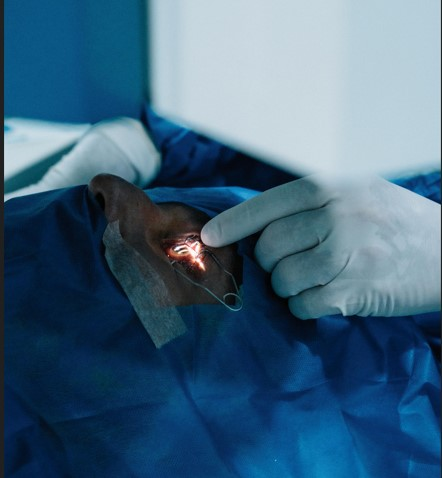🩺 Introduction: The Dawn of a New Era in Vision Correction
Vision correction has entered a revolutionary age.
From the early days of radial keratotomy to today’s precision-guided laser systems, ophthalmology has transformed how millions of people see the world.
But what does the future of eye surgery look like in the next decade?
Emerging technologies — from AI-powered diagnostics to non-invasive laser techniques and even bionic vision implants — are redefining what’s possible for restoring and enhancing eyesight.
In this article, we’ll explore the science, innovation, and possibilities behind the next wave of eye surgery — including laser breakthroughs, AI-assisted precision, and non-surgical vision correction.
🌐 1. Evolution of Laser Eye Surgery
The journey from scalpels to lasers has been one of medicine’s most impressive transformations.
When LASIK (Laser-Assisted In Situ Keratomileusis) was introduced in the 1990s, it revolutionized corrective eye surgery by reshaping the cornea to improve focus.
Since then, innovations such as:
- PRK (Photorefractive Keratectomy)
- SMILE (Small Incision Lenticule Extraction)
- Femtosecond lasers
… have dramatically improved safety, precision, and recovery times.
However, the next generation of laser systems promises even greater control — reaching microscopic precision at cellular and neural levels.
🔬 2. Cutting-Edge Laser Innovations (2025–2030)
The next decade will see laser systems evolve into ultra-precise, AI-guided photonic tools capable of repairing vision without touching the cornea.
Key advancements include:
a. Ultrafast Femtosecond Lasers
New femtosecond lasers now operate at speeds that minimize corneal disruption, offering near-zero heat damage and unprecedented accuracy.
b. Adaptive Wavefront-Guided Surgery
Wavefront technology allows real-time customization of laser pulses to match the patient’s unique corneal topography — leading to “custom-made” vision correction.
c. AI-Calibrated Laser Targeting
Artificial intelligence can analyze micro-movements of the eye during surgery, ensuring sub-micron precision.
d. Corneal Regeneration with Laser Biostimulation
Recent studies show lasers can stimulate corneal cell regeneration — potentially reversing early vision deterioration without invasive procedures.

⚡ 3. Rise of Non-Invasive Vision Correction
Beyond lasers, researchers are pioneering completely non-surgical methods to enhance eyesight — including light-based therapies, gene editing, and photonics.
a. Collagen Cross-Linking with Light Pulses
Non-contact UV light therapy can strengthen corneal tissue — useful in conditions like keratoconus.
b. Smart Eye Drops
Biotech firms are developing “refractive eye drops” capable of temporarily improving focus and reducing presbyopia symptoms.
c. Ultrasound Vision Reshaping
Early trials show that ultrasonic energy can adjust corneal curvature without cutting or removing tissue.
🤖 4. Role of Artificial Intelligence in Eye Surgery
AI is becoming a co-surgeon.
Machine learning algorithms can:
- Analyze retinal scans for early signs of disease,
- Predict post-surgery outcomes, and
- Assist surgeons with real-time guidance during complex procedures.
“AI will make surgeries safer, faster, and more consistent,” says Dr. Elena Vasquez, ophthalmic AI researcher.
“In the future, we’ll see robotic systems performing microsurgeries with precision beyond human capability.”

🧬 5. Smart Contact Lenses & Bionic Vision
The concept of bionic eyes is transitioning from science fiction to clinical reality.
- Smart contact lenses monitor glucose, pressure, and hydration — helping detect eye diseases early.
- Retinal implants convert light into electrical signals, partially restoring sight in patients with degenerative blindness.
- Neuro-visual interfaces will soon transmit visual data directly to the brain, bypassing damaged optic nerves.
🧩 6. The Future of Personalized Vision Treatment
The ultimate goal of modern ophthalmology is precision medicine — tailoring treatments to each individual’s genetic, anatomical, and lifestyle factors.
AI-driven analysis and genetic screening will soon allow surgeons to predict how a patient’s cornea, retina, and neural network will respond before surgery even begins.
⚠️ 7. Risks, Ethics, and Limitations
As promising as it sounds, innovation also raises concerns:
- High cost and accessibility gaps
- Unknown long-term effects of new technologies
- Ethical issues around enhancement vs. correction
Balancing innovation with safety will be crucial as we move forward.
🔮 8. Expert Insights & Predictions
“By 2030, vision correction will no longer mean surgery as we know it,” says Prof. Ian Matthews of the International Vision Institute.
“It will mean regeneration, stimulation, and biological enhancement — guided by light, AI, and the body’s own healing systems.”
❓ FAQ – Future of Eye Surgery
Q1: Will laser eye surgery become fully non-invasive?
A: Yes — next-generation lasers and light-based technologies aim to reshape the cornea without direct contact or cutting.
Q2: Is AI already used in eye surgeries?
A: Yes, AI assists surgeons in diagnostics, planning, and precision guidance during operations.
Q3: What is the safest vision correction procedure today?
A: SMILE and Femtosecond LASIK remain the safest, with over 98% success rates.
Q4: Will gene therapy replace laser surgery?
A: Possibly in the long term, as genetic editing and biostimulation evolve for retinal and corneal repair.
✅ Conclusion
The future of eye surgery is bright — literally and figuratively.
Laser precision, AI guidance, and non-invasive therapies are redefining how we correct and even improve human vision.
By combining technology, biology, and data, the next decade could make blindness and visual impairment largely preventable.
The eyes of the future will not just see better — they’ll heal themselves.



